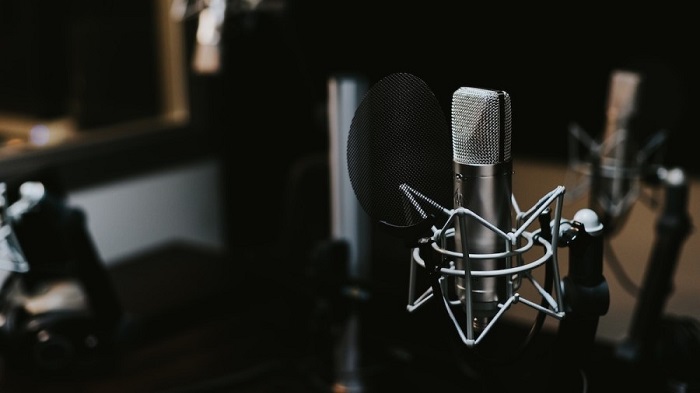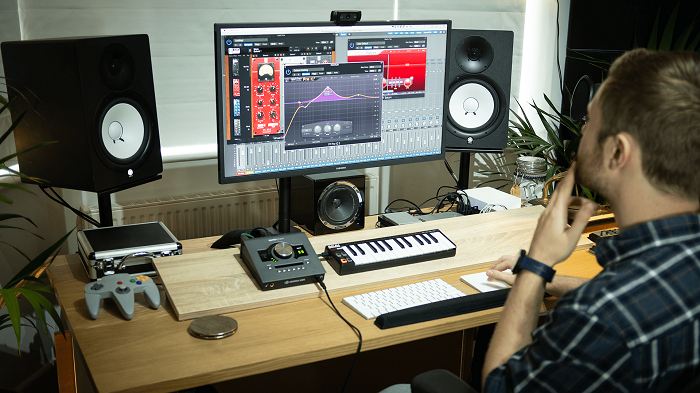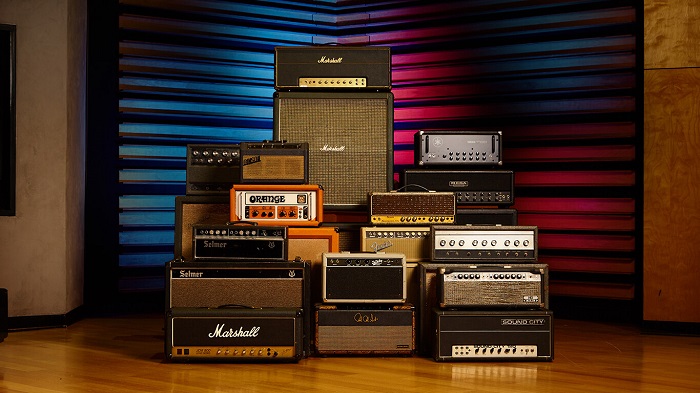The way to success, whether it’s it in welding, baking, or creating beats is by having quality equipment. Searching for pro audio equipment can take time but once you have everything you need you can start making one masterpiece after another. While both talent and proper equipment are needed for this, when combined together, high sound quality, as well as excellent arrangement are guaranteed.
You’ll be able to produce whatever your imagination unfolds in a crisp quality without worrying about your beats sounding bad. As long as you know what to get, even if you’re a beginner, you’ll be still able to produce solid tracks. But not everyone knows what they need, so it’s only common sense to look up what is needed to start off.
What Are Some Various Types of Audio Equipment?
Microphone
Professional audio gear isn’t limited to beat making or recording a track. You can record your own voice with the most important piece of audio equipment – the microphone. Microphones are quite important when you start to buy pro audio gear since without one you aren’t able to record vocals. Doesn’t matter if it’s your voice or sound effects that you want to record, you will have to choose between 4 main types of microphones. These are omnidirectional, shotgun, cardioid, and hypercardioid.
Omnidirectional microphones are the most commonly used as they pick up sounds coming from any direction. With a shotgun microphone, you get a different pickup pattern which is great for capturing voice and some room ambience. Cardioid microphones are able to capture sounds coming from the front side of the mic and a little bit from the sides. Hypercardioid microphones can record sounds that are a bit away from the front of the mic but they can catch fewer sounds that are coming from the sides.

Headset/Monitor
A good headset means a perfectly balanced and mixed song. But headsets are also essential audio equipment if you’re doing presentations where ample mobility is needed. Headsets can come with or without mics but if you have already gotten a professional microphone, then you’re better of getting a headset without one. Mics aside, headphones or headsets need to be comfortable when you’re wearing them and the sound coming from them should be crisp. A pair of headphones with a neutral sound that doesn’t boost the high ends or the bass is what you should be on the lookout for.
If you want to bring your music production to the next level, then you should go for monitors instead which are essentially professional speakers. They also need to be neutral, as too much support on either the high or low end is going to affect the way your track sounds. Headsets can be game-changing when it comes to listening for subtle tweaks, but when you want to hear your track as a whole you definitely need monitors.
Audio Interface
Also known as a sound card, the audio interface is an interesting piece of pro audio equipment. While some say you might not ever touch it when you buy pro audio gear like the audio interface, but that doesn’t have to be the case. Audio interfaces act like a sort of audio converter, but for generating professional-grade audio.
If you happen to use external audio sources on your computer, then you will need an audio interface to get the sound coming from those sources into your computer. The audio interface is where all the sounds come through to your PC, as this type of audio gear also has an analog-to-digital and digital-to-analog converter.

Controllers
While you have your mouse and keyboard acting as the controllers for your computer, when it comes to making music you need different kinds of controllers. A controller interface, as it is also known, is a piano-style keyboard with an array of pads that help you trigger and control sounds.
Cables & Adapters
Adapters and cables are essential types of audio gear. For each microphone, you’re going to need two cables – one long XLR and a short XLR cable. Adapters are used when you need to playback the sound you’re producing back to you. They also help in providing another input port for a mic or a different sound source. As plain as they might look, cables and adaptors are needed as much as the next piece of audio equipment. And the next pieces of professional audio gear are amplifiers.
Amplifiers

An amplifier is a type of audio equipment that helps increase the power of a sound source, such as a mic or an instrument so that it matches the rest when it comes out of the speaker. An amplifier is also important when mixing so that when you change the volume of one beat or instrument it’s not going to be way off from the rest. Otherwise, your track will seem like it has certain parts out of place.












